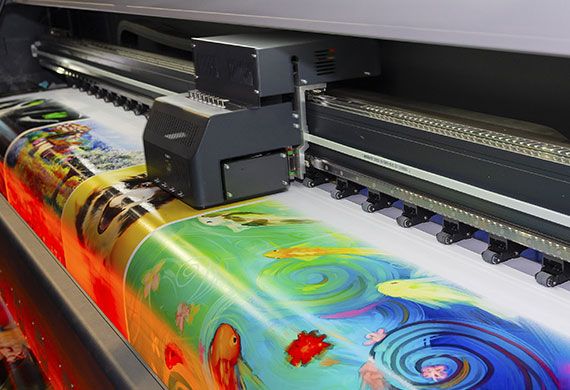
One of the most significant contributions to eco-friendliness in digital printing is the shift towards water-based inks. Unlike traditional solvent-based inks, water-based alternatives significantly reduce volatile organic compound (VOC) emissions and eliminate harmful chemicals. This change minimizes air pollution and supports a healthier working environment for printing professionals.
As the world becomes increasingly conscious of environmental impact, industries are embracing sustainability as a cornerstone of innovation. Digital printing, a versatile and dynamic field, is no exception. The rise of eco-friendly practices in digital printing is driving a green revolution that not only reduces environmental harm but also enhances efficiency and quality.

Reduced Energy Consumption
Eco-conscious digital printing focuses on energy efficiency. Newer printing equipment incorporates features like low-energy LED curing systems that consume less power while maintaining print quality. Additionally, advanced machines are engineered for quicker start-up times, reducing idle energy consumption.
Minimal Waste Generation
Digital printing, with its precision and versatility, allows for on-demand and short-run production. This eliminates the need for large print runs and reduces excessive waste from overproduction. Furthermore, the transition from analog to digital reduces paper waste, as setup and testing prints are minimized.
Recycled Substrates and Sustainable Materials
Eco-friendly digital printing is complemented by the use of recycled and sustainable substrates. Paper, fabrics, and other materials derived from responsibly managed sources contribute to reducing the environmental footprint. This sustainable approach extends to packaging, where digitally printed materials support eco-friendly packaging solutions.
Customization and Reduced Inventory
Customization is a hallmark of digital printing, enabling the production of unique pieces tailored to individual preferences. This level of personalization reduces the need for excessive inventory and prevents unsold items from ending up as waste, fostering a more sustainable supply chain.
Local Production and Reduced Transportation
Eco-friendly digital printing often encourages local production, which minimizes transportation distances and associated emissions. By bringing production closer to consumers, the carbon footprint of transportation is significantly lowered.
Innovation in 3D Printing
Digital printing’s eco-friendly practices extend to 3D printing as well. The ability to print intricate designs with minimal material waste revolutionizes manufacturing processes. Bio-based and recyclable materials are also being explored for 3D printing, paving the way for greener production methods.
Lifecycle Approach to Sustainability
Eco-friendly digital printing embraces a lifecycle approach to sustainability. This involves considering the entire lifespan of a product, from design to disposal. By factoring in aspects like material choices, production processes, and end-of-life considerations, digital printing supports circular economy principles.
The revolution in digital printing singapore isn’t just a passing trend; it’s a transformative shift that aligns the industry with global sustainability goals. As technology continues to advance, eco-friendly practices in digital printing will play a pivotal role in reducing environmental impact, fostering innovation, and reshaping the way we approach printing in a greener future.
